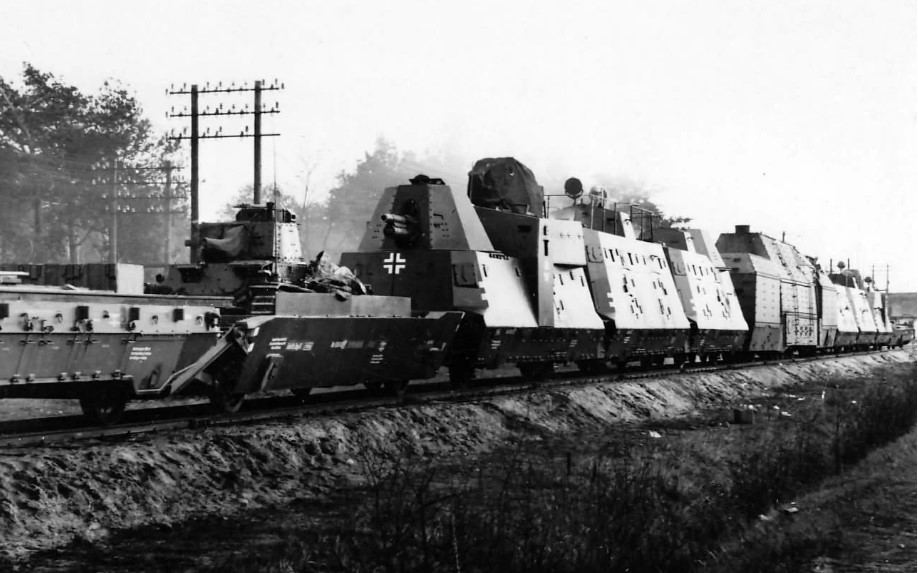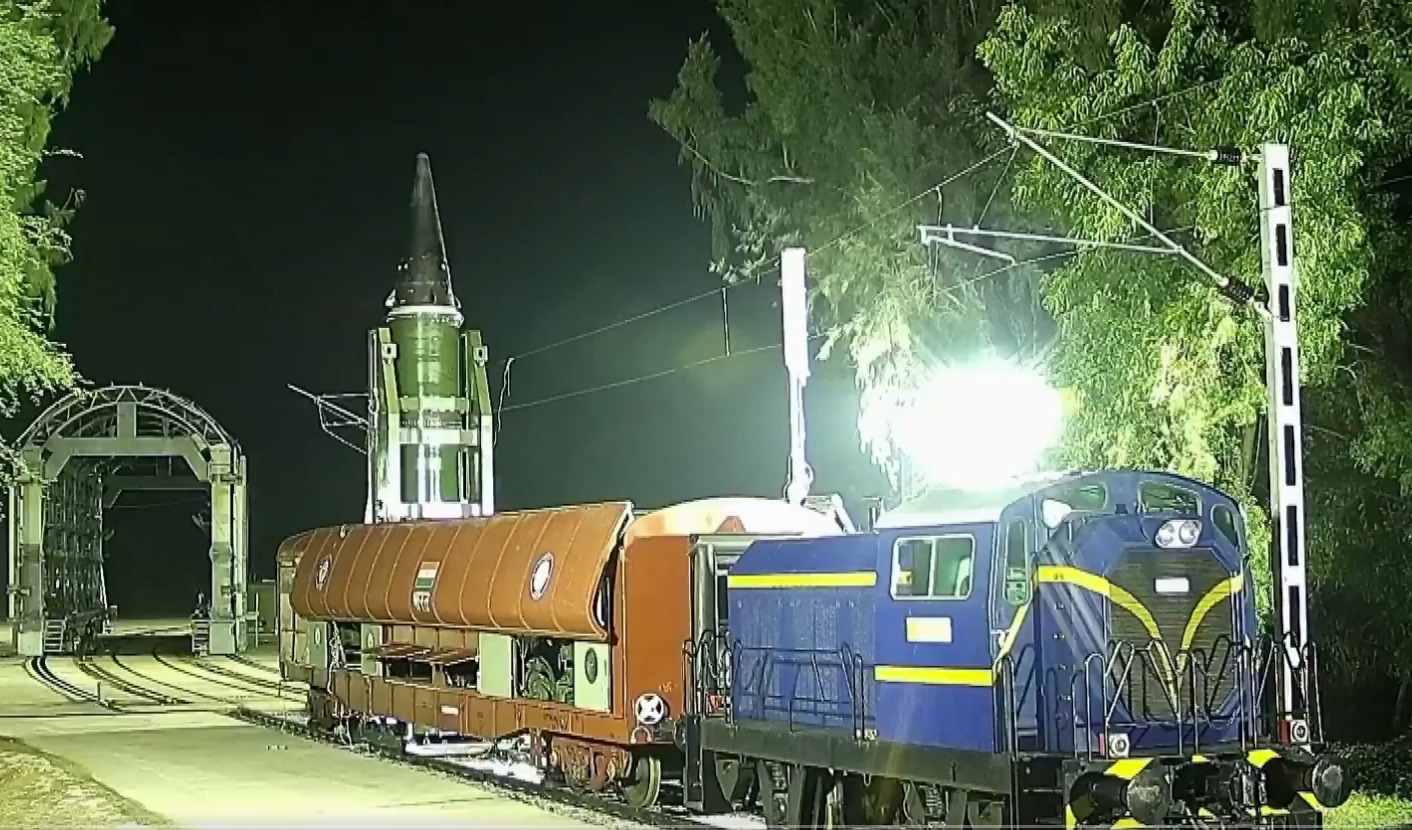“Death Trains”! From Russia’s Molodets To India’s Agni-Prime, Rail-Mobile Missiles Redefine Nuclear Warfare

Combat trains are nothing new. They are as old as the railways themselves. Railways have been an integral part of warfare even before the advent of fighter jets or missiles.
This glorious history of combat trains reached a new milestone on September 24, when India launched its nuclear-capable Intermediate Range Agni-Prime Missile from a rail-based Mobile launcher system.
With this successful launch, India joined an elite group of nations, the US, Russia, North Korea, and China, which have the capability of firing railcar-based intercontinental ballistic missiles, or ICBMs.
While the first successful launch of the Agni Prime missile was conducted over two years ago, the latest missile launch was no ordinary deal, precisely because it was launched from a train.
However, even the idea of a nuclear-capable ICBM train is also decades-old. In the 1980s, both the Soviet Union and the US were developing ICBM integrated trains. Curiously, despite remarkable progress, work on the project was halted in 1991.
The concept was then resurrected during the last decade, with new countries, such as China and North Korea, also joining the bandwagon.
The 160-Year History Of Combat Trains
The history of combat trains, encompassing armored locomotives and military railways designed for warfare, dates back to the 19th century, when railways revolutionized logistics and combat strategy.
Their origins lie in the American Civil War (1861–1865), during which early, improvised armored wagons were used.
Since then, combat trains have been used in almost every conflict, including the Franco-Prussian War (1870–1871), the Second Boer War (1899–1902), and the Russo-Japanese War (1904–1905).

Combat trains were also used extensively in both World Wars. Trains served as armored vehicles with heavy artillery guns mounted on them, mobile hospitals, supply depots, and even command centers, underscoring their logistical prowess.
Post World War II, the use of combat trains declined due to fears of aerial strikes on them. However, the integration of ICBMs gave combat trains a new lease of life.
ICBMs On Combat Trains
In the 1980s, the Soviet Union integrated ICBMs on trains, known as the RT-23 Molodets. The idea was to address the vulnerability of fixed ICBM silos to preemptive strikes by leveraging the USSR’s vast railway network.
The system used modified railway cars to carry and launch the RT-23 missile, a three-stage, solid-fuel ICBM with a range of 10,000–11,000 km and capable of carrying up to 10 MIRV (multiple independently targetable reentry vehicle) warheads, each with a 550-kiloton yield.
The trains could easily blend with civilian trains, making their identification and targeting extremely difficult.
These trains were self-sufficient and could travel over 1,000 km daily, making them hard to track.

The Russian ICBM integrated trains were a direct response to U.S. advancements in satellite reconnaissance.
The fear of a potential U.S. preemptive strike aimed at destroying Soviet nuclear launch sites, known as a “first strike,” prompted the Soviet leadership to explore alternative and more survivable methods for deploying their ICBMs.
The concept of railcar-launched ICBMs emerged as a response to this concern.
By dispersing ICBMs across 150,000 km of railway, the Soviets aimed to ensure second-strike capability, complicating U.S. targeting.
By 1991, the year the Soviet Union dissolved, the Kremlin was already operating 12 such trains.
Following the USSR’s development of integrated ICBM trains, the US also developed its own “Rail Garrisons”. The US aimed to deploy 50 MGM-118A Peacekeeper (MX) ICBMs on 25 dedicated trains. The project was approved in 1986, and one prototype was tested in 1988.
However, in 1991, following the collapse of the Soviet Union, the project was canceled. One prototype car is preserved at the National Museum of the U.S. Air Force.
After the Cold War, the 1993 START II treaty banned MIRVs (Multiple Independently Targetable Reentry Vehicles) on ICBMs, prompting Russia to phase out the RT-23 by 2005. Some trains were dismantled, though one is preserved at the St. Petersburg Railway Museum.
The Rebirth Of Nuclear ICBM Trains
In 2012, Russia began developing a successor to the RT-23, known as the RS-27, which would utilize a significantly lighter RS-24 Yars missile, weighing only 54 tons and carrying four nuclear warheads.
Less weight would allow the system to use standard train wagons with regular wheels and mount six ballistic missiles instead.
The Yars is claimed to travel at 20 times the speed of sound and perform evasive maneuvers, as well as deploy decoys, to evade ballistic missile interceptors. However, due to international sanctions following Russia’s annexation of Crimea and declining oil prices, work on RS-27 progressed slowly.
In 2019, Russian media reported that Russia would test-fire an ICBM from a missile-equipped “death train.” The Barguzin “railroad combat complex,” or BZhRK, was to be armed with six RS-24 Yars ICBMs, a fifty-five-ton missile that reportedly carries up to ten nuclear warheads, and is already deployed in fixed silos and mobile truck-mounted launchers.
However, some reports suggest that work on BZhRK is currently halted.
In 2016, China conducted a launcher test of a new rail-mobile version of its newest intercontinental ballistic missile (ICBM), the DF-41 (CSS-X-20).
The launch “was likely meant to test the tube launch system’s compatibility with its new rail car,” IHS Jane’s Defense Weekly reported at that time.
According to reports, the Chinese rail-mobile ICBM system is modeled on the Russian RT-23 rail-mobile solid-fuel ICBM.
In 2021, North Korea claimed that it had test-fired a nuclear-capable ICBM from a train.
The missile flew 800 km (497 miles) before striking a target in the sea off North Korea’s east coast, state news agency KCNA reported.
Amid this renewed interest in rail-mobile ICBMs, India has also successfully test-fired the nuclear-capable Agni Prime, with a range of 2,000 km, from a launch bed pulled by an Indian Railways locomotive.
India Joins Elite Club; Test Fires Nuclear-Capable ICBM From A Train
On September 24, the DRDO, in collaboration with the Strategic Forces Command (SFC), successfully launched the Intermediate Range Agni-Prime Missile from a rail-based Mobile launcher system under a full operational scenario. This next-generation missile is designed to cover a range of up to 2000 km and is equipped with various advanced features.

The launch was carried out from a specially designed rail-based mobile launcher that could move on the Rail network without any preconditions. The train is self-sustained and is equipped with all independent launch capability features, including the state-of-the-art communication systems and protection mechanisms.
“This successful test has put India in a group of select nations that have developed canisterised-launch systems from on-the-move rail networks,” India’s Defense Minister Rajnath Singh posted on the social media platform X.
The capability will strengthen India’s second-strike capability. Notably, India has the world’s fourth-largest railway network. India’s rail network is currently over 67,000 km.
This means that India could launch its nuclear-capable Agni Prime missile from anywhere in its railway network, including from the remotest parts of the country, even without road support.
It also means the military can hide missiles from enemy satellites in train tunnels.
Furthermore, this enables the Indian military to store missiles at multiple locations. This capability becomes particularly important during times of war, when an enemy country could launch a missile attack against storage facilities.
Railcar-based launches, therefore, give Indian ICBMs an additional protection layer and strengthen India’s assured “second strike” capability.
- Questions and Answers
- Opinion
- Motivational and Inspiring Story
- Technology
- Live and Let live
- Focus
- Geopolitics
- Military-Arms/Equipment
- Seguridad
- Economy
- Beasts of Nations
- Machine Tools-The “Mother Industry”
- Art
- Causes
- Crafts
- Dance
- Drinks
- Film/Movie
- Fitness
- Food
- Juegos
- Gardening
- Health
- Home
- Literature
- Music
- Networking
- Other
- Party
- Religion
- Shopping
- Sports
- Theater
- Health and Wellness
- News
- Culture

